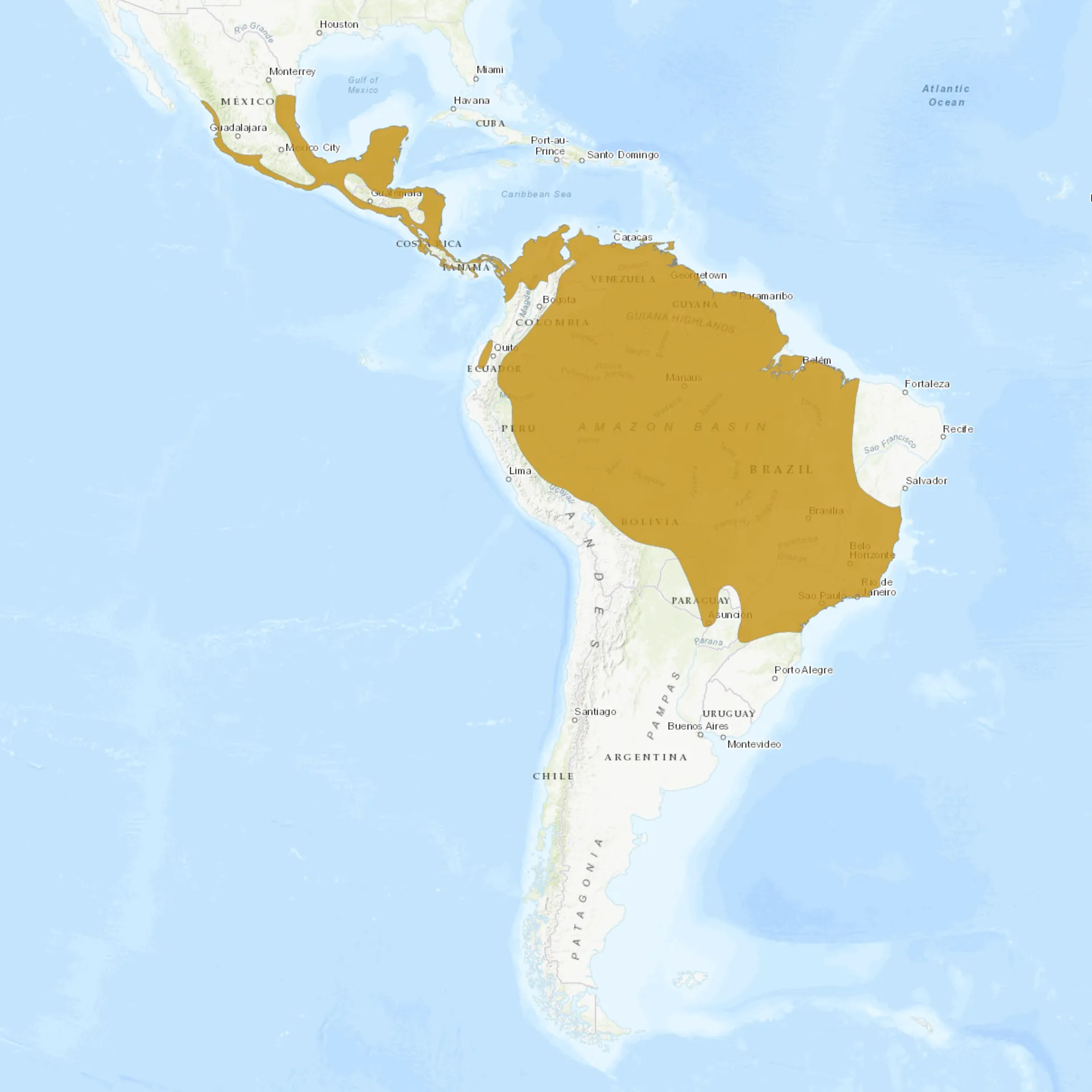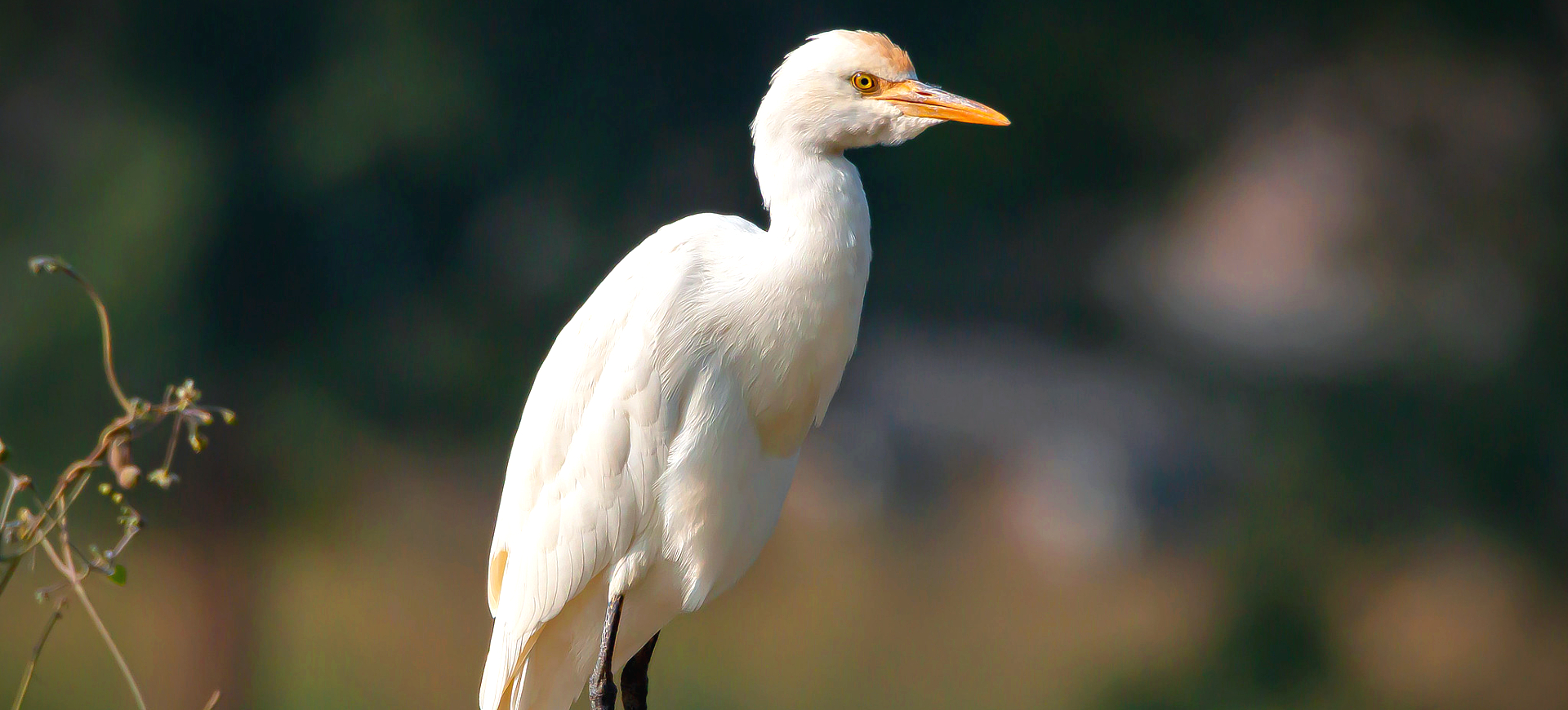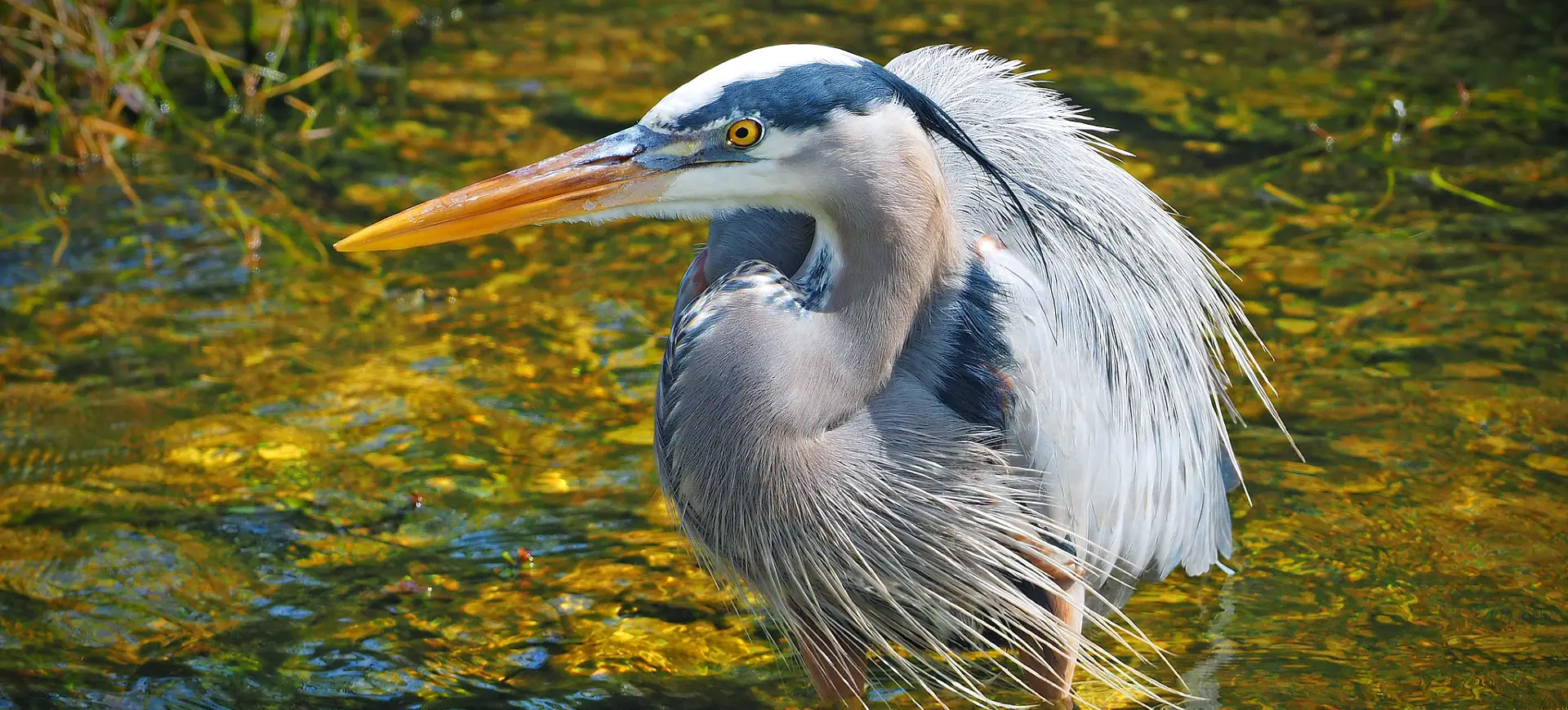Overview
The Boat-billed Heron, scientifically known as Cochlearius cochlearius, is a distinctive species in wetlands across Latin America. Characterized by its broad, scoop-shaped bill resembling a boat, this bird is specially adapted for nocturnal feeding. It has a relatively stocky body, short neck and legs compared to other herons, and a unique plumage pattern that blends well with its swampy habitat. The species is notable for its secretive behavior, often remaining well-hidden in dense cover near water bodies during the day.
This heron primarily dwells in freshwater environments, including marshes, mangroves, and the edges of rivers and lakes. Unlike many herons that feed in open waters, the Boat-billed Heron uses its oversized bill to forage in the mud and vegetation for various aquatic prey. It is a solitary feeder that becomes more active at dusk, using the cover of night to avoid predators and competition. The bird’s calls are an interesting aspect of its behavior, consisting of a series of clicks and other sounds that are thought to play a role in social interactions and possibly in echolocation during nocturnal feeding.
Conservation efforts for the Boat-billed Heron are primarily focused on habitat preservation, as the bird’s well-being is closely tied to the health of wetland ecosystems. The species is currently not considered at a high risk of extinction, thanks partly to a wide distribution and a general tolerance for somewhat disturbed habitats. However, ongoing threats such as wetland drainage, pollution, and deforestation necessitate continued vigilance to ensure these unique birds remain a common sight in their natural settings.
Taxonomy
Kingdom
Phylum
Class
Order
Family
Genus
Species
Type
Current distribution:
The Boat-billed Heron is found across a wide range in Latin America, from Mexico and Central America down through South America to northern Argentina and Uruguay. Its presence is consistent across this range, although it tends to be more localized in areas where wetland habitats have been significantly altered or diminished.
Conservation efforts and the heron's adaptability have helped maintain its population across much of its natural range. However, specific populations may fluctuate based on habitat quality and the impact of human activities. The species is generally sedentary, with most individuals not undertaking long migrations, although some movement may occur in response to changes in water levels or food availability.
Physical Description:
The Boat-billed Heron is immediately recognizable by its large, broad bill, unique among herons. This bill is not only wide but also somewhat flattened, which helps the bird scoop up prey from muddy waters. The bird’s plumage is generally grayish with a black crown and back, strikingly contrasting its white underparts. Juveniles display a browner coloration, which gradually changes to the adult’s grayish tones as they mature.
This species has a moderate size, with adults typically reaching a body length of about 19 to 20 inches (48 to 50 cm), making it a medium-sized heron. It does not exhibit a significant sexual dimorphism in size or plumage, making males and females difficult to distinguish visually. The bird’s legs and feet are relatively short and sturdy, suited for standing in shallow waters. Its eyes are adapted for nocturnal vision, being larger and more reflective than many other bird species, aiding in its nighttime activities.

Lifespan: Wild: ~8 Years || Captivity: ~15 Years

Weight: Male & Female: 1-1.2 lbs (453-544 g)

Height: Male & Female: 19-20 in (48-51 cm)

Wingspan: Male & Female: 30-31 in (76-79 cm)

Top Speed: Unknown
Characteristic:
Native Habitat:
The Boat-billed Heron inhabits a variety of freshwater and brackish environments throughout its range in Latin America. Preferred habitats include mangroves, swamps, marshes, and the edges of rivers, lakes, and streams. These areas provide the dense vegetation cover and abundant aquatic life that the heron relies on for feeding and breeding.
The species’ distribution spans from Mexico through Central America to northern Argentina and Uruguay, showing a preference for warmer, tropical, and subtropical climates. Its habitat selection is largely influenced by water availability and suitable nesting sites in trees or shrubs close to water bodies. The Boat-billed Heron’s ability to adapt to different wetland habitats has been key to its widespread distribution and relatively stable population numbers.
Climate Zones:
Biomes:
Biogeographical Realms:
Continents:
Diet:
Diet & Feeding Habits:
The Boat-billed Heron’s diet is varied, consisting largely of small fish, crustaceans, insects, and occasionally small amphibians and reptiles. Its unique bill allows it to forage effectively in dense vegetation and muddy waters, using a combination of tactile and visual cues to detect prey. Feeding primarily at night, it relies on the cover of darkness to reduce competition for food and avoid predators.
The bird’s foraging strategy involves standing still or walking slowly through shallow waters to ambush prey. It may also use its bill to probe mud and vegetation or to sweep through water to catch moving prey. This nocturnal feeder is less commonly seen during daylight hours, preferring to rest in dense foliage where it remains well camouflaged. The adaptation of its large eyes enhances its ability to see in low light conditions, giving it an advantage over prey and competitors in the darkness.
Mating Behavior:
Mating Description:
The Boat-billed Heron is a solitary nester, with pairs establishing territories in dense wetland vegetation, constructing platform nests out of sticks and vegetation. Mating season varies by region but generally coincides with the rainy season, providing optimal conditions for raising offspring due to increased availability of food. Courtship involves vocalizations and physical displays, such as bill clapping and neck stretching, strengthening pair bonds and deterring rivals.
Eggs are laid in clutches of 2 to 4, with both parents sharing incubation duties over about 24 days. The chicks are altricial, meaning they are born relatively undeveloped and rely on their parents for warmth, protection, and food. Parental care is extensive, with both the male and female feeding the young regurgitated food. The chicks fledge after approximately 6 weeks but may remain with the parents for additional support.
Reproduction Season:
Birth Type:
Pregnancy Duration:
Female Name:
Male Name:
Baby Name:
Social Structure Description:
The Boat-billed Heron is primarily a solitary species, especially outside of the breeding season when individuals spread out across their habitat to forage alone. During the breeding season, however, pairs form monogamous relationships and work together to build nests, incubate eggs, and rear their young. Social interactions outside breeding pairs are minimal, with territory and resources being defended against intruders.
Boat-billed Herons may nest in loose colonies in some areas, possibly due to limited nesting sites or abundant food resources. These colonies are not highly social gatherings but rather a congregation of individual pairs, each maintaining its territory within a larger area. The species communicates through various vocalizations and physical displays, which establish territory, attract mates, and coordinate between parents and offspring.
Groups:
Conservation Status:
Population Trend:
The Boat-billed Heron’s overall population is considered stable, with no immediate threats that would cause widespread decline. The species benefits from its wide distribution and generalist habitat preferences, allowing it to thrive in various wetland environments. Local populations may experience fluctuations due to environmental factors or human activities, but the species has shown resilience in adapting to changing conditions.
Conservation efforts focused on wetland preservation and restoration are critical to maintaining healthy populations of the Boat-billed Heron. These efforts benefit this species and a wide range of other flora and fauna that depend on wetland ecosystems. Continuous monitoring and research are necessary to understand the impacts of climate change and habitat loss on this and other wetland species, ensuring that conservation strategies remain effective.
Population Threats:
The main threats to the Boat-billed Heron include habitat loss due to wetland drainage, deforestation, and urban development. Pollution and pesticide runoff into waterways also pose significant risks, affecting the quality of the bird’s feeding and nesting sites. Climate change is an emerging concern, potentially impacting wetland ecosystems that could alter water levels, food availability, and breeding conditions.
Conservation measures are crucial to mitigate these threats, emphasizing the protection of wetland habitats and implementing sustainable land-use practices. Public awareness and education about the importance of wetlands and the species that inhabit them can also play a key role in conservation efforts. By addressing these threats through habitat protection, legal protections, and community engagement, the future of the Boat-billed Heron can be more secure.
Conservation Efforts:
Conservation efforts for the Boat-billed Heron are primarily focused on habitat protection and restoration. Many regions within its range have established protected areas that include wetlands, ensuring critical habitat remains available for this and other species. Environmental organizations and governments are working to implement policies safeguarding wetlands from degradation and destruction.
Education and outreach programs aim to raise awareness about the importance of wetland conservation, targeting both local communities and policymakers. These programs emphasize the ecological value of wetlands, including their role in biodiversity conservation, flood control, and water purification. Research on the Boat-billed Heron’s ecology and behavior contributes to more effective conservation strategies, helping to monitor population trends and identify emerging threats.
Additional Resources:
Fun Facts
- The Boat-billed Heron’s bill is unique in shape and function, serving as an effective tool for capturing a variety of aquatic prey.
- Despite being nocturnal, this heron has a surprisingly colorful plumage that is only fully appreciated in good lighting.
- It is one of the few bird species whose sound production mechanism during flight is not fully understood, contributing to its mysterious persona.
- The species’ large eyes are highly adapted for night vision, featuring more rod cells for detecting light in dark conditions.
- Unlike many herons, the Boat-billed Heron prefers to forage alone, relying on stealth and the cover of night rather than group foraging strategies.
- Their nesting sites are often reused year after year, with both males and females contributing to repairs and preparation for new clutches.
- The Boat-billed Heron is known for its distinctive vocalizations, including various clicks and clucks that are thought to play a role in communication and possibly navigation in the dark.
- This heron’s ability to adapt to varying water levels in its wetland habitat showcases its flexibility and resilience in changing environments.
- Juvenile Boat-billed Herons have distinctly different plumage from adults, which provides them with additional camouflage in their dense, vegetative habitats.
- The species plays an important ecological role in controlling populations of aquatic insects and other small prey, contributing to the health of wetland ecosystems.











